Calculating Room Square Footage for Painting Projects
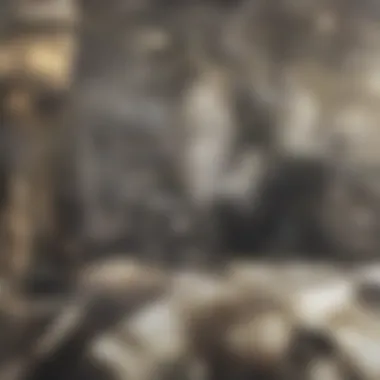

Intro
Calculating the square footage of a room is a fundamental step prior to any painting project. This necessary task not only determines the amount of paint required but also minimizes waste and helps avoid costly mistakes. The process can seem daunting, particularly for individuals unfamiliar with measurement techniques. However, a systematic approach can demystify the topic.
In this guide, we will delve into the methodology behind calculating room square footage, exploring essential tools and measurement techniques. We will address various room shapes to offer a comprehensive understanding, catering to homeowners and those who appreciate design.
Understanding the nuances of measuring square footage is more relevant today than ever. With numerous projects occurring in homes and the desire for personalized spaces, precision becomes key. This guide aims to enhance your confidence and ensure that your painting projects are successful.
Home Design Inspiration
Architectural Styles
To create a harmonious living space, understanding the architectural style of a room can aid in the selection of paint color and finish. Varieties like modern, traditional, or eclectic have different techniques when it comes to enhancing their aesthetics. When one knows the architectural essence, it is easier to apply an appropriate color palette, amplifying beauty while also engaging in effective painting.
Key Architectural Styles:
- Modern: Characterized by clean lines and minimalism.
- Traditional: Known for its classic details and warm colors.
- Eclectic: A mix of various styles, allowing for bold and distinct colors.
Innovative Decor Trends
Innovative decor trends influence the way spaces are painted and presented. Greenery, sustainable materials, and natural textures are pivotal in today's design philosophy. Paint colors often reflect these trends, with shades inspired by nature or earth tones gaining popularity.
Current Decor Trends:
- Use of biophilic design, which integrates nature into interior spaces.
- Incorporation of eco-friendly paints to support sustainability.
- Emphasis on textured finishes to add depth and character.
"The right color can change the perception of space, making it feel larger or more intimate."
Through understanding these principles, you can align your painting project with current trends, ensuring that your space is both current and comfortable.
The next sections will equip you with practical steps and methods for accurate measurements, followed by specific calculations for different room shapes.
Prelude to Square Footage Calculation
Calculating square footage holds key signifigance in home improvement projects, especially when it comes to painting. With accurate square footage estimates, homeowners can plan effectively, minimizing risks of running short on materials or overestimating needs. This introduction outlines how this fundamental skill lays the groundwork for fruitful painting encounters.
Importance of Accurate Measurements
Accurate measurements serve as the backbone of any painting project. When the square footage is calculated properly, it ensures the right amount of paint is purchased. Incorrect estimates can lead to either wasted resources or insufficient coverage. This situation often arises from various factors, including misjudging wall dimensions or neglecting protrusions and recesses in room design.
For instance, if a room measures 10 feet by 12 feet, calculating the area without accounting for windows or doors can significantly distort the total. Each square foot matters. Thus, taking great care in measuring confirms both efficiency and financial prudence.
Additionally, using precise measurements can influence the type of paint and finishes chosen for a project. High-quality paints often have specific coverage rates that align with accurate calculations. Thus, the link between measurement accuracy and overall aesthetic quality should not be overlooked.
Impact on Painting Costs
The costs associated with painting largely hinge on accurate square footage calculations. Knowing the exact area allows homeowners to figure out the quantity of paint needed. Paint comes in various containers, with coverage specified on the label. Typically, one gallon covers approximately 350 square feet with one coat. If the square footage is miscalculated, it can result in purchasing too much or too little paint, complicating budget planning.
Furthermore, the size and style of a room can determine the labor costs as well. More complex shapes or areas with many fixtures could lead to an increase in time and effort required for painting.
"Clear and correct calculations can lead to significant savings and a well-executed painting project."
Accurate square footage leads directly into effective budgeting. It avoids potential tuckered-out professionals, and helps minimize frustrations and ultimately ensures satisfaction with the newly painted space.
Understanding Square Footage
Understanding square footage is vital in any painting project. It provides a clear picture of how much paint is necessary and influences the cost involved. Accurately knowing the square footage helps avoid issues like overestimating or underestimating materials required. This, in turn, minimizes waste, thereby making the project both economically and environmentally friendly.
Furthermore, square footage calculation goes beyond simple mapping. It involves appreciating how different room shapes can alter the total area, and how to consider specific features like windows and doors. This knowledge is essential for anyone aiming for a neat and professional finish in their painting tasks.
Definition of Square Footage
Square footage measures the area of a surface. It is determined by measuring the length and width of a room in feet and then multiplying these two figures. The formula is straightforward:
Square Footage = Length x Width
For instance, a room that is 10 feet long and 12 feet wide would have a square footage of 120 square feet. Knowing the square footage is essential for planning and executing paint projects efficiently.
Basic Geometry Principles
Understanding some basic geometry principles is crucial when calculating square footage. Here are some important concepts to consider:
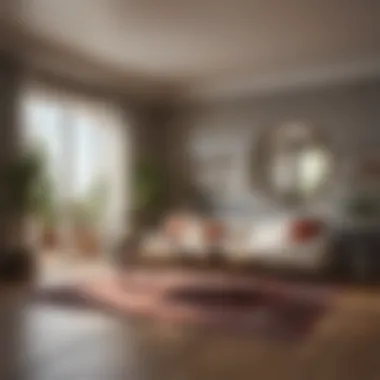
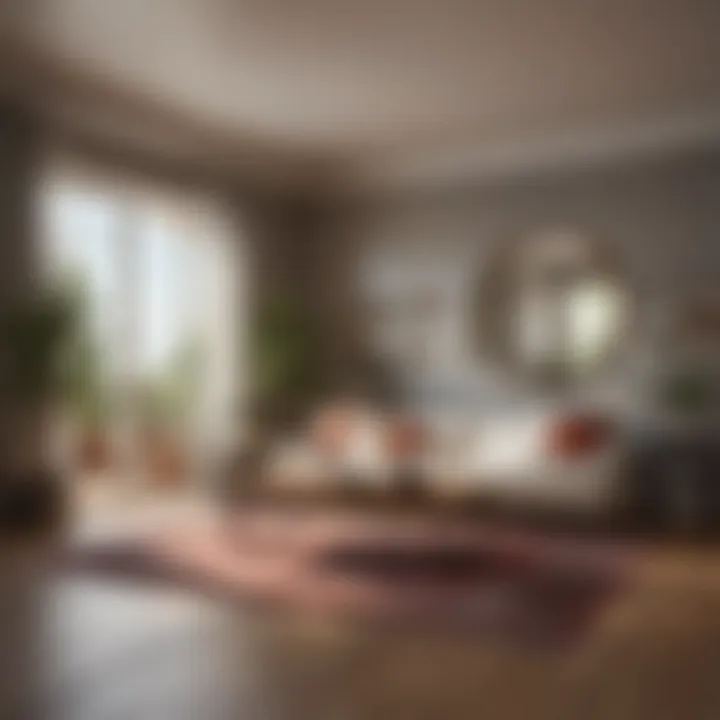
- Rectangular Shapes: The most common room shape. The area is found easily using the formula mentioned prior.
- Irregular Shapes: For rooms with alcoves or non-rectangular sections, break the area into smaller rectangles or triangles. Measure each section separately and add the results to find the total area.
- Trapezoids: Sometimes, rooms are in trapezoidal shapes. The area can be calculated using the formula:
Area = (Base1 + Base2) / 2 x Height
This principle helps in measuring spaces more accurately.
Accurate measurement of square footage is essential to avoid complications in painting projects. Miscalculations can lead to excess costs and wastage of materials.
Keep in mind that knowing how to translate the practicalities of geometric calculations can translate into smoother and more effective painting plans.
Tools Required for Measuring
Measuring the dimensions of a room accurately is crucial when planning a painting project. The tools used play an essential role in ensuring that the measurements are precise, thus avoiding potential pitfalls later in the process. Accurate measurements lead to a clear understanding of the paint required and the potential costs involved. Using the right tools not only boosts efficiency but also enhances the quality of the end results.
Measuring Tape
The measuring tape is one of the most fundamental tools in the measuring arsenal. It is portable and easy to use, making it suitable for various scenarios, especially in small or confined spaces. When selecting a measuring tape, it is advisable to choose one with a length sufficient to cover the dimensions of your room. Generally, a tape of 25 feet or more is sufficient for most interior spaces. It is also beneficial to have a tape that is marked well with both imperial and metric units; this can aid in quicker conversions if needed.
Benefits of using a measuring tape include:
- Affordability: Measuring tapes are inexpensive and can be found in any hardware store.
- Ease of Use: Even for novices, they are straightforward to operate and provide reliable measurements.
- Flexibility: The ability to measure curved areas or corners makes them versatile for different room layouts.
In practice, stand at one end of the room and extend the tape to the opposite wall. Ensure to keep the tape level for accurate length measurements, and note the measurement down for future calculations.
Laser Measure
A laser measure presents a modern approach to calculating distances. These devices are particularly useful for larger rooms or spaces where tape measuring might be cumbersome. A laser measure uses a laser beam to determine the distance, providing quick and precise measurements.
Key advantages include:
- Speed: Laser measures take seconds to get accurate readings, saving time during the measurement process.
- Precision: They significantly reduce human error that can occur with manual tape measuring.
- Convenience: Many models can calculate square footage or volumes directly, reducing the need for further calculations.
When using a laser measure, follow the manufacturer's instructions. It typically involves pointing the device towards the wall opposite you and pressing a button. Ensure that the path of the laser is clear of obstructions for the most accurate readings.
Level and Notepad
A level helps to ensure that your measurements are accurate over uneven surfaces or if walls are not perfectly straight. It ensures that your tape is held straight when measuring, which is especially important when calculating the dimensions of longer walls or ceilings.
The notepad serves as a simple yet essential tool for keeping track of all measurements taken throughout the process. It can be beneficial to jot down measurements as you go to avoid confusion or errors during later calculations.
Using a level involves placing it against the wall or surface you are measuring to ensure it is straight before marking locations. You can combine this task with your notepad to jot down dimensions and notes on potential challenges you encounter along the way.
In summary, these tools offer distinct advantages when measuring a room for painting. Each one contributes to ensuring the process proceeds smoothly and accurately, laying the groundwork for a successful painting project.
Step-by-Step Measuring Technique
The art and science of accurately measuring a room for painting cannot be understated. Not only does precise measurement lead to effective paint purchase, but it also significantly reduces the potential for waste and miscalculations during the painting process. A methodical approach to this task breaks down what might seem complex into manageable steps, ensuring clarity and accuracy. This technique not only assists in estimating the right amount of paint required but also serves as a solid foundation for planning any painting-related project.
Preparation of the Room
Before taking any measurements, it is essential to prepare the room. This involves clearing out as much furniture and decor items as possible. Move smaller pieces out completely, while larger items should at least be pushed away from walls to create a clear workspace. Ensure that the floor is clear as well, as this allows for easier navigation with your measuring tools. Additionally, check for any unnecessary fixtures that might hinder the measurement process. Remember that clutter can lead to distractions and inaccurate measurements.
Measuring Length and Width
With the room cleared, start measuring its length and width. Using either a measuring tape or a laser measure can streamline this process. For those using a measuring tape, anchor one end against the wall and extend it to the opposite side, noting the measurement where it meets the wall.
When measuring the width, repeat this process. Recording these dimensions accurately is essential. If the room has any irregularities, such as alcoves or indentations, make sure to measure these as well. To ensure reliability, it may be beneficial to take each measurement twice. This reduces the chance of human error and ensures that the numbers you record are correct.
Calculating Square Footage
Now that you have the measurements, calculating the square footage is straightforward. Use the formula:
[ \textSquare Footage = \textLength \times \textWidth ]
For example, if a room measures 12 feet in length and 10 feet in width, the calculation would be:
[ \text12 ft \times \text10 ft = \text120 square feet ]
When dealing with irregular shapes, consider dividing the space into smaller rectangles, calculating each rectangle's area, and then summing them for your total square footage. This makes it much easier to handle complex room layouts, ensuring accurate calculations for painting projects.
"An initial careful measurement can save time and resources later on."
Accurate calculations pave the way for every subsequent phase of your painting project, making it vital to prioritize this step.
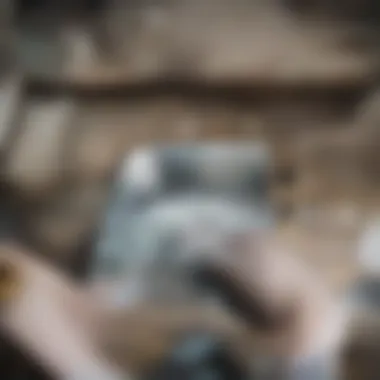
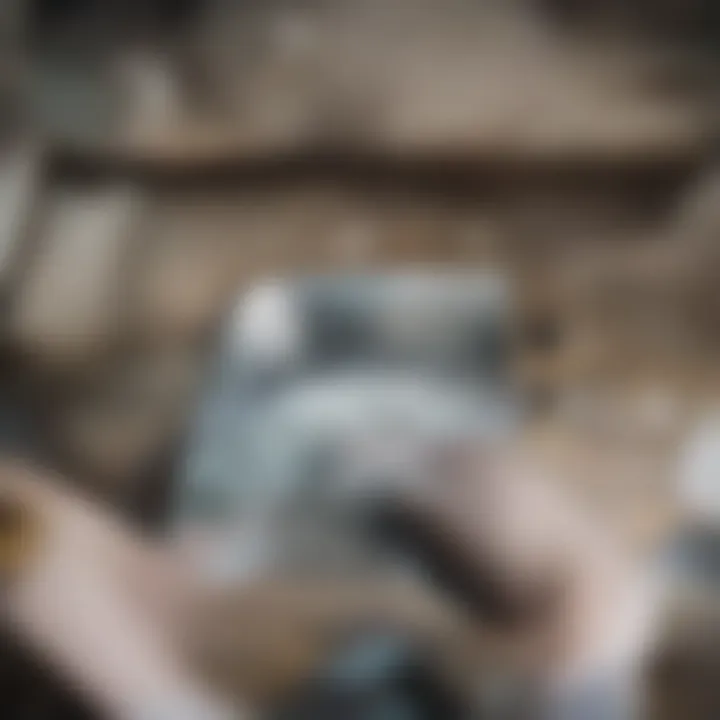
Handling Irregularly Shaped Rooms
When faced with irregularly shaped rooms, accurate square footage calculation becomes crucial. Regular measurements may not yield precise results, leading to miscalculations. Understanding how to approach these unique spaces can drastically enhance the quality of your painting project. Not only does it help in determining the right amount of paint needed, but it also ensures that you avoid wasting materials and money.
Dividing the Space into Rectangles
One of the most effective methods for measuring an irregularly shaped room is to break it down into smaller rectangles. By doing so, you can simplify calculations, providing clearer dimensions to work with. Here’s how to execute this method:
- Visual Assessment: Start by mentally picturing the room. Identify distinct areas that can be considered rectangular. This includes alcoves, extensions, and areas where walls meet at right angles.
- Measurement: Measure each rectangular section separately. Use a measuring tape or a laser measure for accuracy. Record each dimension carefully, including both length and width.
- Calculate Area: Once you have measurements for each rectangle, calculate the area using the formula:[ \textArea = \textLength \times \textWidth ]\
- Total Area: Finally, add the areas of all rectangles to find the total square footage of the room. This method ensures that every part of the space is accounted for, making it easier to estimate paint requirements accurately.
Using Trigonometric Methods
Not all irregular rooms can be simplified into rectangles. In cases with angles that are not right angles, trigonometry may be the necessary route. Knowing a few basic trigonometric principles can assist effectively. Here’s a straightforward approach to apply:
- Identify Angles: Measure the angles of the irregular sections if applicable. An angle finder can come in handy here. If you know the lengths of two sides and the angle between them, you can proceed with calculations.
- Use of Formulas: The Law of Cosines can help when working with triangular sections. The formula states:[ c^2 = a^2 + b^2 - 2ab \cos(C) ]where ( c ) is the length of the side opposite the angle ( C ), and ( a ) and ( b ) are the other two sides.
- Calculate Area of Triangles: To find the area, apply the formula:[ \textArea = \frac12 \times b \times h ]where ( b ) is the base and ( h ) is the height.
- Sum All Areas: Finally, add the areas of all odd-shaped parts of the room, even those derived from triangle calculations, to get the total square footage.
Utilizing these techniques to handle irregularly shaped rooms empowers you to approach painting projects with confidence. Inaccurate measurements and assumptions can lead to increased costs and time delays. Hence, applying either method can streamline your planning and execution, establishing a more satisfying outcome in your painting endeavors.
Account for Fixtures and Obstructions
In painting a room, it is essential to consider the presence of fixtures and obstructions. These elements can significantly impact your calculations of square footage as well as the overall appearance of the finished project. Accurate measurements should encompass not just wall space but also any objects that may interfere with the painting process.
When calculating paint requirements, it is vital to subtract areas taken up by windows, doors, and built-in furniture from the total wall area. If neglected, these fixtures can lead to overspending on paint and may affect coverage quality. Getting these details right helps in budgeting correctly and ensuring optimal paint application.
Windows and Doors
Windows and doors are common features found in most rooms. Each of these can affect the total area you intend to paint. It is important to measure and exclude the square footage of these openings when calculating how much paint you will need.
- Measuring Openings: Measure the height and width of each window and door. To find the square footage, multiply these dimensions. By counting all windows and doors in the room, you can calculate their total area effectively.
- Placement Considerations: The placement of windows and doors can impact how light enters the room. This can change the perceived colors of the paint, so consider this when selecting paint types and colors.
- Type of Window Treatment: If applicable, remember that window treatments like curtains or blinds might require additional considerations during the painting process.
Built-in Furniture
Built-in furniture can often present unique challenges when calculating square footage for painting. Unlike freestanding furniture, built-ins require careful consideration as these typically occupy wall space that cannot be painted.
- Types of Built-ins: Common built-in elements include bookshelves, cabinets, and wall-mounted storage. Measuring these precisely is critical because they absorb wall space and should not be included in the total painting calculation.
- Access and Coverage: In some cases, the painting might need to occur around the built-ins. This can lead to awkward painting angles and might demand specific techniques or tools, making access a consideration during the project planning phase.
- Aesthetic Balance: Built-in furniture can also affect the aesthetic appearance of a room’s color scheme. Choices may need to be adjusted to consider how the built-in elements harmonize with the painted walls.
Overall, careful consideration of fixtures and obstructions not only assists in accurate calculations but also enhances the finished appearance of your painted room.
By breaking down each aspect of the room and understanding how they interact with your painting project, you can streamline the process, minimize waste, and achieve a high-quality finish.
Calculating Paint Requirements
Calculating paint requirements is a critical component in any painting project. Accurately determining how much paint is needed can help avoid unnecessary costs and waste. Moreover, understanding paint requirements ensures that the project can be completed without interruption due to insufficient materials. It affects project planning, budgeting, and time management, making this section vital for homeowners and contractors alike.
Understanding Paint Coverage
Paint coverage refers to the area that a particular paint can cover with one application. This varies by paint type and brand. For example, a gallon of standard wall paint typically covers about 350 to 400 square feet. However, several factors can affect coverage, including:
- Surface texture: Rough surfaces absorb more paint and may require additional coats.
- Color change: Painting over a darker color with a lighter shade often necessitates extra coats.
- Paint type: Different types of paint (e.g., flat, semi-gloss, or gloss) may also impact how much you need.
It is essential to read the manufacturer's guidelines on the paint can. This information provides an estimation of how much area can be covered and helps to plan accordingly.
Determining the Amount Needed
To calculate the exact amount of paint needed:
- Measure the total square footage of the walls being painted. For standard rooms, this involves measuring the length and height of each wall and applying the square footage formula (Length x Height).
- Subtract the area of windows and doors. Each window and door must be accounted for since they will not be painted. The average door is about 20 square feet, while windows vary.
- Consider the number of coats required. If the initial coat does not provide good coverage, a second coat may be necessary. Adjust calculations accordingly by factoring in the coverage per gallon multiplied by the number of coats.
- Account for extra paint for touch-ups. It is prudent to buy a little more paint than the calculated necessity to accommodate any touch-ups needed after the initial painting is complete.
Accurate calculations significantly reduce wasted paint and save money, ensuring efficient project completion.
Following these steps will help in making informed decisions about the amount of paint necessary for your project, fostering both quality and efficiency.
Estimating Cost of Painting
Estimating the cost of painting is a crucial aspect of any painting project. Without a clear understanding of the financial commitments involved, homeowners may face unexpected expenses. This section delves into the detailed break down of costs associated with painting, focusing on both materials and labor. Each factor plays an essential role in the overall budget, making it imperative to consider them carefully before diving into the project.
Cost of Materials
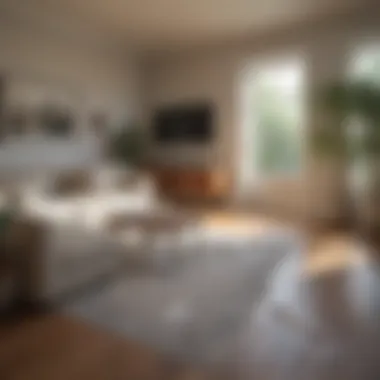
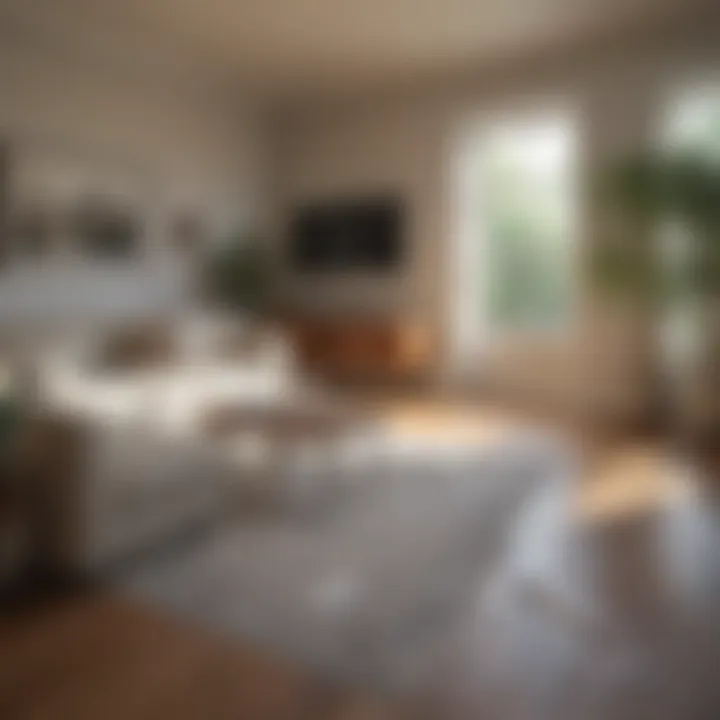
When estimating the cost of materials, it is essential to account for all necessary items. Paint quality, quantity, and finishes can greatly influence the overall price. Here are some important considerations:
- Type of Paint: Selecting between interior or exterior paint can change costs. For instance, high-end paints like Sherwin-Williams or Benjamin Moore will typically cost more than standard brands.
- Paint Finish: Matte, satin, or gloss finishes come with varying price points. Satin, while popular, might be more expensive than flat finishes.
- Supplies Needed: Don’t forget supplies like brushes, rollers, drop cloths, and painter's tape. These add to the cost but are necessary for a proper application.
- Coverage Estimates: Understanding the coverage area per gallon can help determine how much paint is needed. Typically, one gallon paints about 350-400 square feet.
In summary, the total cost of materials can vary significantly based on choices made from paint brand to the specific tools required for the job. It’s advisable to estimate a slight buffer for any unforeseen additional costs that may arise during the project.
Labor Costs
Labor can be one of the most significant expenses in a painting project. When hiring professionals, costs can vary based on different factors:
- Experience of Contractors: More experienced painters might charge higher rates but may provide superior quality and efficiency.
- Project Complexity: Intricate designs, high ceilings, or special requests such as textured walls can increase labor hours, thus raising costs.
- Geographic Location: Rates can differ greatly depending on the market. Urban areas may have higher labor costs compared to rural locations.
- Additional Services: Some contractors offer wall preparation services or cleanup after the job which could add to the total cost.
*"Understanding labor costs is essential, as they can sometimes exceed the material costs, especially for larger projects."
Common Mistakes to Avoid
Mistakes in calculating square footage for painting can lead to overestimations or underestimations in both materials purchased and the overall project cost. Identifying these common pitfalls allows homeowners and decorators to achieve their desired results effectively. By being aware of potential mistakes, it becomes easier to work towards an accurate project execution. Addressing these issues minimizes waste and enhances the efficiency of the painting process.
Neglecting Dimensions
One of the most common errors made during square footage calculations is neglecting dimensions. Homeowners often forget to measure certain areas or skip dimensions entirely, leading to an incomplete understanding of the room's size. This can result in ordering too much or too little paint, which can significantly affect the overall budget and time spent on the project.
To avoid this mistake:
- Measure each wall individually. Don’t assume walls are all the same length; differing dimensions can alter square footage.
- Double-check measurements. It’s wise to measure twice to ensure accuracy.
- Consider height. Remember to account for the height of walls, especially if painting involves ceilings. Ignoring vertical dimensions could lead to additional costs for paint.
Overlooking Surface Preparation
Surface preparation is a critical aspect often overlooked by many prior to painting. Skipping this step can compromise both the appearance and durability of the paint. A well-prepared surface ensures that the paint adheres properly and provides a uniform finish.
Essential steps for effective surface preparation include:
- Clean the walls. Dirt and grease can inhibit proper adhesion. Use a mild detergent to wipe surfaces clean.
- Repair any damages. Holes, cracks or uneven surfaces must be repaired before painting. Filling these gaps can result in a smoother finish.
- Use primer if needed. A good primer can enhance paint adherence, particularly on porous or previously painted surfaces.
Neglecting surface prep can lead to peeling paint and an unfinished look. Taking the time to prepare surfaces can save time and money in the long run.
By staying mindful of these common mistakes, individuals can enhance their understanding of square footage calculations, leading to more effective and satisfying painting projects.
Finalizing Painting Plans
Finalizing painting plans is a crucial stage in any paint project, influencing both the workflow and the final results. This phase requires careful thought on several elements, including color selection, project timing, and methods of application. By addressing these points systematically, one can anticipate challenges and ensure a smooth execution.
Choosing the Right Paint
Choosing the right paint is essential for achieving the desired look and durability. There are various types of paint such as latex, oil-based, and specialty paints designed for specific surfaces. Each has its own set of characteristics and uses.
- Latex Paint: Water-based and easy to clean up. This type dries quickly and is ideal for most interior walls. It also offers good adhesion and flexibility.
- Oil-Based Paint: Provides a durable finish that is often preferred for trim and cabinetry. However, it takes longer to dry and requires solvents for cleanup, which can be a drawback for many.
- Specialty Paints: These include textured, anti-mold, or low-VOC options. Their selection should depend on the specific needs of the room, such as moisture levels or desired aesthetics.
Choosing the right color is equally important. Consider the room's function, lighting, and existing decor before making a final choice. Testing samples on the wall can help visualize the impact in the intended space.
Scheduling the Project
Scheduling the project is equally vital to ensure that the paintwork is completed efficiently. A well-defined timeline can prevent unexpected delays that often occur in home improvement tasks.
- Consider Room Usage: Schedule painting when the room is least in use. Avoid busy weekends if possible.
- Prepare for Drying Times: Paint typically requires several hours to dry. Plan enough time between coats, which could range from two to four hours.
- Weather Conditions: If working in areas with natural ventilation, consider mild weather for optimal drying conditions. Avoid extremes of temperature or humidity as they can negatively affect paint adhesion and curing.
- Allow for Preparation: Planning should account for preparatory tasks such as moving furniture, taping edges, and priming surfaces.
Overall, finalizing the painting plans, selecting suitable paint and scheduling can significantly mitigate risks and contribute to a successful outcome.
Closure
In this article, we have discussed the methodical approach to calculating room square footage for painting projects. Understanding this process is crucial for anyone looking to undertake a painting project, as it directly influences the quality and efficiency of the job. The main elements that we have covered revolve around accurate measurements, appropriate tools, and techniques used for both standard and irregularly shaped rooms.
The importance of a well-calculated square footage lies in its impact on overall costs and material usage. With precise square footage, home owners can avoid wasting paint and money. Each step we detailed offers benefits that improve the painting experience, a careful review of fixtures and obstacles, and ways to estimate labor costs effectively.
Moreover, being thorough in this process ensures the painting yields satisfactory results, contributing to the overall aesthetics of your living space.
"Accurate square footage measurements are not just about numbers; they are the foundation for a successful painting project."
Recap of Key Points
- Accurate measuring is fundamental in obtaining the correct square footage needed for painting.
- Tools like measuring tapes and laser measures aid in simplifying the measuring process.
- Special considerations are necessary for irregularly shaped rooms, including dividing rooms into manageable sections.
- Accounting for fixtures, windows, and doors is essential to avoid overestimating required paint.
- Understanding paint coverage and calculating the amount needed helps minimize waste.
- Cost estimation covers two major areas: material and labor, both critical to the project's budget.
Encouragement for Future Projects
Now that you have a firm grasp of how to calculate room square footage accurately, you are better equipped to tackle your next painting project. This knowledge not only enhances your confidence in the process but also ensures practical and effective solutions.
Consider experimenting with different colors and techniques in your space. The skills you've obtained here allow you to plan better and execute your vision. By applying careful measures and thoughtful planning, you can achieve impressive results that elevate the ambiance of any room in your home. Remember that each project is a chance to learn and refine your skills. The experience you gain will be invaluable for future endeavors.







